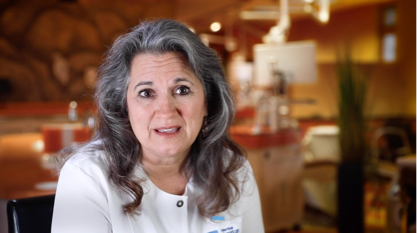In-House Aligners Financial Considerations
An inside look at the numbers.
Before you bring any new product into your practice, it’s important to understand the costs – and benefits – involved. While many orthodontists like you express some concern about the high initial costs of assembling an in-house aligner lab, our experience shows that the improvements to efficiency, workflow and patient care justify the expenses. As you explore the options for each component of your system, there are several factors to consider.
Investing in your in-house lab.
Initial Costs
One of the greatest mental barriers to adoption of in-house fabrication of aligners is the initial cost. Bringing 3D printing in-office for retainer and aligner fabrication can help reduce overall expenses and provide increased options for patients.
The most significant costs include:
Intraoral Scanners
$12,500 – $30,000
3D Printers
$2,500 – $14,750
Check with your accountant as there may be tax benefits associated with purchase of equipment for your practice.
Benefits
Intraoral Scanners
Scanning allows a reduction in staff time and improved systems:
- Scanning is less technique sensitive, so training is easier and there is minimal chance for distortion.
- Less clean up for the staff.
- Minimal storage (no physical stone models).
- Improved patient comfort, which helps draw patients to your practice.
3D Printers
3D printing provides an immediate cost saving per model that is printed:
- Most outside labs charge $10-$12 for printing each arch. The average cost of printing an arch in-house includes $2 in resin, $3.75 of staff time and $1 of cost in post processing supplies which leads most clinicians to average $6.75 of overhead per printed model. Therefore, each model can be printed at roughly 40% of the cost, quickly justifying the initial purchase price of the printer.
- Break-even period: Even with a minimal use for printing 50 models a month (25 debonds or a few aligner cases), the cost of many 3D printers could be recovered in around a year. Purchasing more robust printers at a higher cost is justified when more models are printed a month, which occurs when adding in-house aligner cases. When ramping up aligner production, hybrid plans and additional retainer fabrication, the cost of a printer can be recovered quickly.
New patients help payback your investment.
For aligner cases of 14 sets or less, savings per case can help you attract new customers to payback your investment.
Sample Savings
In-House Fabrication
$550
Average cost of 14 upper and lower aligners
Third-Party Aligners
$1,349
Average lab cost of 3rd party lite aligner case
Savings per Case
$799
*Assuming total cost of $19.65 per aligner in-house: roughly $5.65 for digital set-up, $6.75 to print and $7.25 to fabricate and package.
New services attract new patients – and faster payback.
Your new or enhanced in-house lab gives you more opportunities to offer a wider range of services, which can attract new patients and help you payback your investment faster. You can:
- Fabricate clear aligners for easy cases
- Fabricate retainers
- Make replacements for lost retainers or aligners
- Start patients with braces, and use in-house aligners to finish
- Begin complex cases sooner by making the first few aligners while you wait for third-party aligners
- Fabricate splints, indirect bonding trays and direct print brackets
In-House Aligner Payback Calculator
See how long it could take you to payback the investment in your lab.
